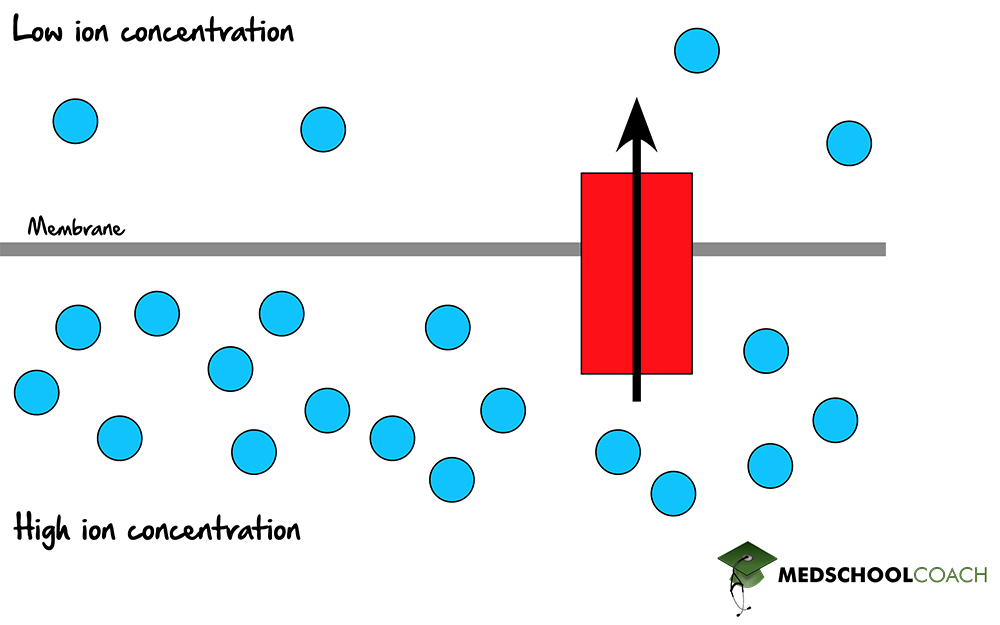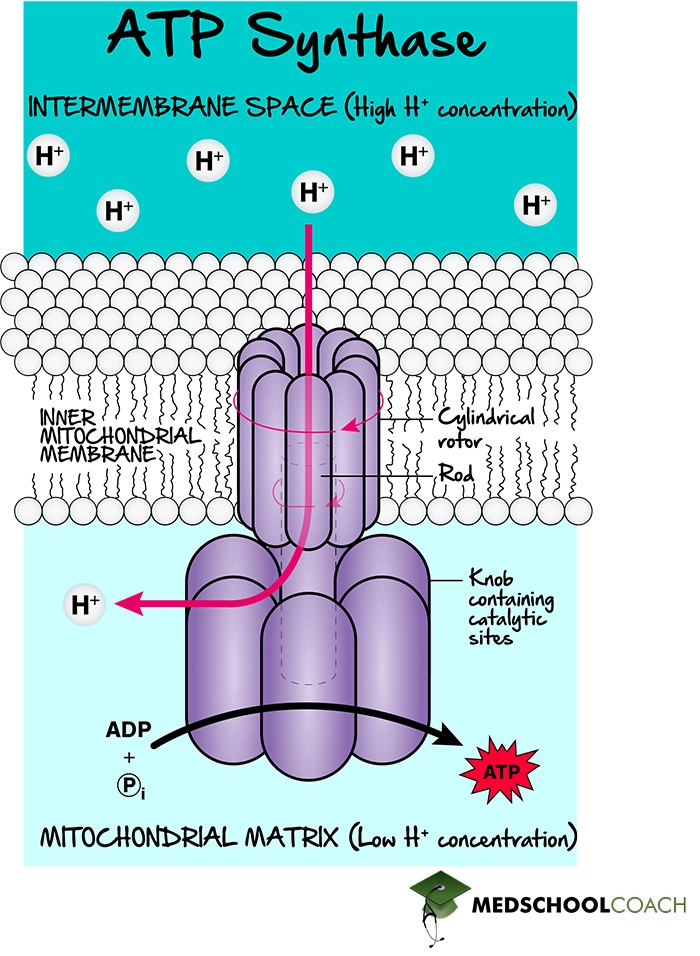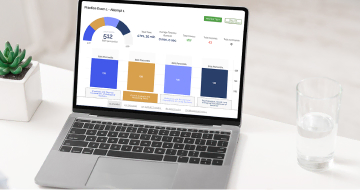Chemiosmotic Coupling & Proton Motive Force
MCAT Biochemistry - Chapter 6 - Section 3.2 - Cellular Respiration - Chemiosmotic Coupling & Proton Motive Force
- Home
- »
- MCAT Masterclass
- »
- Biological and Biochemical Foundations of Living Systems
- »
- Biochemistry
- »
- Chemiosmotic Coupling & Proton Motive Force – MCAT Biochemistry
Sample MCAT Biochemistry Question
In terms of the proton gradient created during the oxidative phosphorylation, which of the following is true?
a) Low [H+] in the intermembrane space; High [H+] in the mitochondrial matrix
b) Low [H+] in the intermembrane space; Low [H+] in the mitochondrial matrix
c) Low [H+] in the mitochondrial matrix; High [H+] in the intermembrane space
d) High [H+] in the intermembrane space; High [H+] in the mitochondrial matrix
C is correct. Low [H+] in the mitochondrial matrix; High [H+] in the intermembrane space
In oxidative phosphorylation, NADH and FADH2 are oxidized to produce a proton gradient, and this proton gradient is used to produce ATP. The protons in this process are pumped from the mitochondrial matrix into the intermembrane space. Thus, there will be a high proton concentration in the intermembrane space and a low proton concentration in the mitochondrial matrix.
Oxidative Phosphorylation and ATP Production
Recall that oxidative phosphorylation, the process of oxidizing NADH and FADH2 to power ATP, has two steps. The first step is the electron transport chain, where NADH and FADH2 are oxidized to produce a proton gradient. The second step involves ATP synthase, an enzyme which utilizes something called proton motive force to produce ATP. This post discusses the latter step.
Chemiosmotic Coupling and Proton Motive Force
In order to understand how ATP is produced by ATP synthase, it’s important to first understand the concept of chemiosmotic coupling. Chemiosmotic coupling is the idea that the proton concentration gradient across the inner mitochondrial membrane, which is generated by the electron transport chain, is ultimately what drives ATP production via ATP synthase.
We discussed the electron transport chain and the creation of the proton gradient in a previous post. However, just to refresh your memory, recall that in the electron transport chain, enzyme complexes oxidize electron carriers like NADH and FADH2 and couple this reaction with the pumping of protons from the mitochondrial matrix to the intermembrane space. This pumping of protons creates a high proton concentration in the intermembrane space and a low proton concentration in the mitochondrial matrix, and this proton gradient acts as a store of energy. The energy stored in the proton concentration difference is also called the proton motive force. This proton motive force is what will be used to produce ATP. (Figure 1).
The reason why proton motive force can power so much ATP production is because it is a store of both chemical potential energy and electrical potential energy. The chemical potential energy is due to the concentration difference across the membrane (recall that chemicals naturally flow from a higher concentration to a lower concentration) (Figure 1) and the electrical potential energy refers to the charge difference between the mitochondrial matrix and the intermembrane space. By pumping positive charges into the intermembrane space, the mitochondrial matrix carries a net negative charge in comparison to the intermembrane space. In this way, the mitochondrial matrix will be able to attract positive charges as a result of stored up electrical potential energy, motivating protons to move back into the matrix.

Proton Motive Force and ATP Synthesis
The formation of ATP from ADP and inorganic phosphate is an energetically unfavorable reaction. By coupling ATP synthesis with an electrochemical gradient, an energetically unfavorable, endergonic reaction is paired with an energetically favorable, exergonic one. Figure 2 illustrates a special protein pore in the inner mitochondrial membrane called ATP synthase. The function of ATP synthase is to couple the favorable movement of protons down their concentration gradient with the unfavorable synthesis of new ATP molecules. This is what chemiosmotic coupling is.

Explore More MCAT Masterclass Chapters
Take a closer look at our entire MCAT Masterclass or explore our Biochemistry lessons below.

One-on-One Tutoring
Are you ready to take your MCAT performance to a whole new level? Work with our 99th-percentile MCAT tutors to boost your score by 12 points or more!
See if MCAT Tutoring can help me
Talk to our enrollment team about MCAT Tutoring

MCAT Go Audio Course
Engaging audio learning to take your MCAT learning on the go, any time, any where. You'll be on the way to a higher MCAT score no matter where you are. Listen to over 200+ lessons.

MCAT Practice Exams
Practice makes perfect! Our mock exams coupled with thorough explanations and in-depth analytics help students understand exactly where they stand.

MCAT Prep App
Access hundreds of MCAT videos to help you study and raise your exam score. Augment your learning with expert-created flashcards and a question banks.